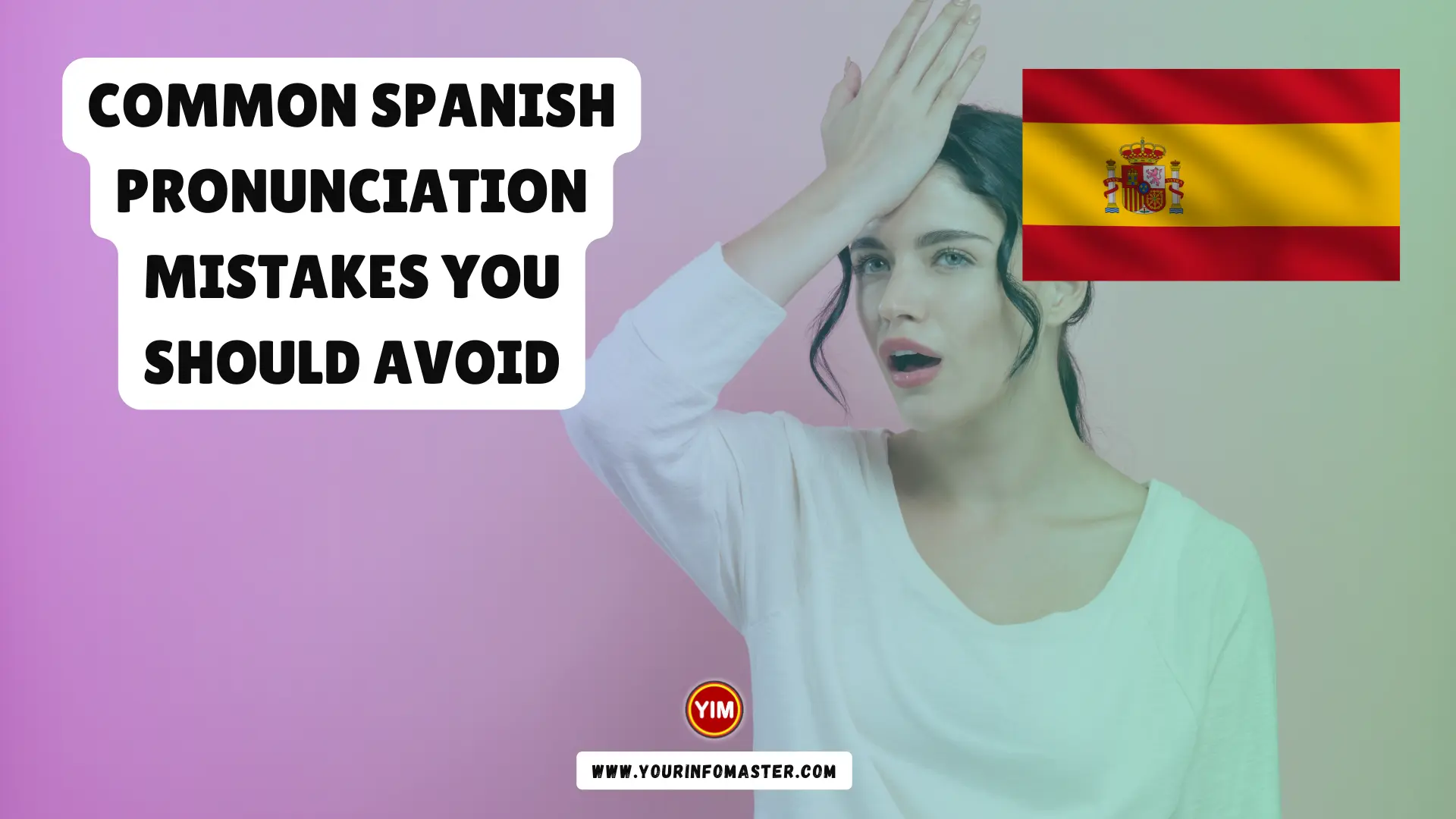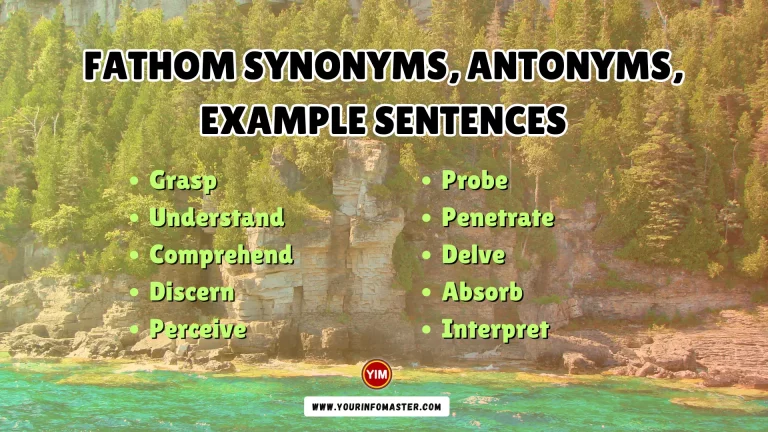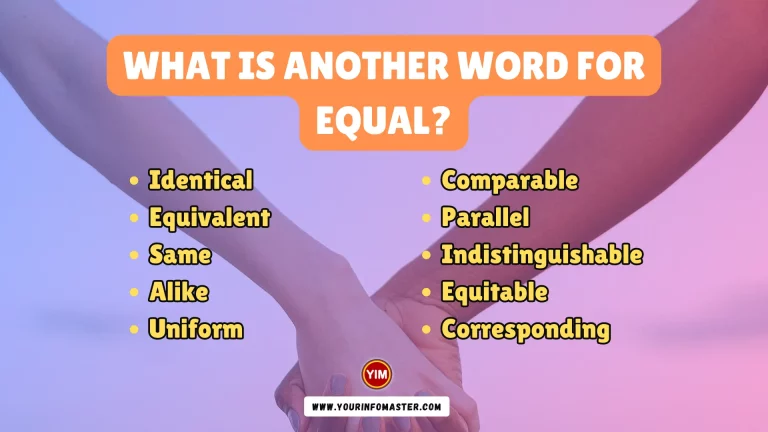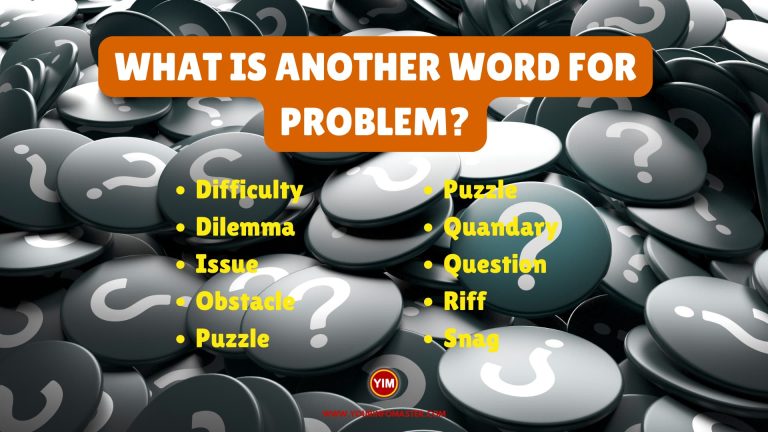Common Spanish Pronunciation Mistakes You Should Avoid. Making a good impression while speaking Spanish is important, especially when trying to communicate with native speakers. Here are seven common pronunciation mistakes that English speakers often make in Spanish.
By learning to steer clear of these errors, you can improve your Spanish pronunciation and show your dedication to effective communication with your Spanish-speaking friends.
Check also: How To Pronounce Vowels in Spanish?
Main Point: Common Spanish Pronunciation Mistakes You Should Avoid
- Keep in mind that Spanish pronunciation doesn’t always follow English rules.
- Several letters in Spanish, like g, h, l, r, u, v, and z, are pronounced quite differently than in English.
- The letter pairs ll and rr are pronounced differently than when these letters appear alone.
Common Spanish Pronunciation Mistakes You Should Avoid
- Mispronouncing the Spanish “R”: Avoid pronouncing the Spanish “r” like the English “r.” It’s a different sound – think of it as a separate letter.
- Misunderstanding “G” and “H” Pronunciations: Remember that the Spanish “g” before “e” or “i” is softer than the English “g,” often sounding like “h.” For example, “gente” is pronounced “HEN-teh.”
- Incorrectly Pronouncing “U” Sounds: Avoid pronouncing the Spanish “u” like the English “u” in “fuse.” Instead, use the “oo” sound, as in “moo.”
- Misjudging the Spanish “L” Pronunciation: Make sure the Spanish “l” sounds like the first “l” in “little,” whether at the beginning, middle, or end of a word.
- Mixing Up “B” and “V” Sounds: Remember that “b” and “v” are pronounced the same way in Spanish. Avoid distinguishing them like in English.
- Not Trilling “RR” Properly: Practice the “rr” sound, a brief trill, and distinguish it from the regular “r” sound.
- Ignoring Diphthongs and Triphthongs: Be aware of Spanish vowel combinations and how they form diphthongs and triphthongs, which can affect pronunciation.
- Mispronouncing “LL” as “Y”: Don’t pronounce “ll” like the English “y.” Give it a distinct sound similar to the “zh” in “azure.”
- Overlooking “J” Pronunciation: Master the Spanish “j” sound, a guttural sound, different from the English “j.”
- Misunderstanding Accent Marks: Learn the rules of stress and accent marks, as they can significantly affect the pronunciation and meaning of words.
Avoiding these common pronunciation mistakes will help you sound more natural and communicate effectively in Spanish.
Turning the R Into Mush
Let’s tackle the trickiest letter for English speakers first! Here’s the basic rule: Don’t pronounce the Spanish r like you would in English. Think of it as a new letter altogether, even though it’s spelled the same as the English “r.”
Spanish has two different r sounds. The regular r sound, which you’ll come across more often, is similar to the “dd” sound in “paddle” or the “tt” sound in “little.” So the word mero (which means “mere” or “only”) sounds more like “meadow,” not “marrow.”
Wasn’t that manageable? The other r sound, often referred to as the rr sound because it used to be a distinct letter, is used for rr and when r appears at the start of a word or sentence by itself. This rr sound is a quick trill and might take some practice to get right. Imagine your tongue fluttering against the roof of your mouth like a strong breeze, or even like a cat’s purr or a motorboat’s revving. Once you get the hang of it, it can actually be quite enjoyable to produce.
Check also: Spanish Verb Trabajar Conjugation
Giving the G and J Their Sound in ‘Judge’
In English, the letter “g” often takes on the “j” sound when followed by “e” or “i.” This pattern exists in Spanish as well, but the “j” sound used in the “ge” and “gi” combinations is quite distinct. English speakers tend to use something like the English “h” sound to approximate it, while native Spanish speakers in most places usually make it a more throaty and intense sound. You’ll be easily understood if you say gente (people) as “HEN-teh” and jugo (juice) as “HOO-goh.”
Turning the U Into a Different Vowel
The sound of the letter “u” in Spanish is never like the “u” sound in words like “fuse,” “but,” or “push.” When it’s on its own and not combined with another vowel, it’s similar to the “oo” sound you hear in “moo,” which is spelled “mu” in Spanish. So the word “uno” (one) sounds somewhat like “OO-noh,” and “uniforme” (uniform) sounds like “oo-nee-FOR-meh.” Like the other Spanish vowels, the “u” has a clear and distinct sound.
When the “u” comes before another vowel, it smoothly merges into the following vowel and ends up sounding a bit like the English “w.” For instance, “cuenta” (account) sounds like “KWEN-tah,” and “cuota” sounds quite close to the English word “quota.”
This also brings up another interesting point: After the letter “q,” the “u” is silent unless a dieresis (two dots) is added to make it “ü.” Therefore, “quince” (the number 15) sounds like “KEEN-seh.” But when the dieresis is added, the “u” carries a “w” sound. So, “pingüino” (penguin) is pronounced somewhat like “peeng-GWEEN-oh.”
Failing To Keep the L Distinct
Pay close attention, and you might notice that the first “l” in the word “little” has a different sound than the second “l.” The first one is produced with the tongue touching the roof of the mouth, while the second one isn’t. The essential rule for pronouncing the Spanish “l” is that it sounds like the first “l” in “little.” Consequently, the “l” has the same sound in “mal” as it does in “malo” and “mala” (all of them meaning “bad”). In simpler words, “mal” doesn’t sound like “mall.”
The repeated “l” or “ll,” which used to be considered a separate letter in the alphabet, has a sound that varies with different regions. However, you won’t make a mistake by giving it the sound of the “y” in “yet.” So, for example, “calle” (street) sounds somewhat like “KAH-yeh.”
Check also: Spanish Verb Creer Conjugation
Conclusion
Mastering Spanish pronunciation can be a rewarding journey, and steering clear of these common mistakes will ensure that you communicate clearly and confidently in the language. By honing your skills, you’ll enhance your ability to connect and converse with native speakers with accuracy and ease.
If you really enjoyed the article about “Is the G in ‘Guacamole’ Silent?,” then I would be very grateful if you’d help it spread by emailing it to your friends or sharing it on Twitter, Instagram, or Facebook. Thank you!
Have you read “Is the G in ‘Guacamole’ Silent?“ Which of these blogs are you reading, and how is it similar to one of them?
Read More
- Is the G in ‘Guacamole’ Silent?
- Pronouncing Difficult Spanish Consonant Sounds
- Mastering Stress and Accent Marks in Spanish
- How to Pronounce R in Spanish?
- How to Write Months in Spanish?
- Spanish Cell Phone and Social Media Abbreviations
- How to Type Spanish Accents and Punctuation in Windows?
- How to Type Spanish Accents and Punctuation on a Mac?
- How to Use Hyphens in Spanish?
- What are Spanish Greetings?
- Spanish Strong Vowels and Weak Vowels







